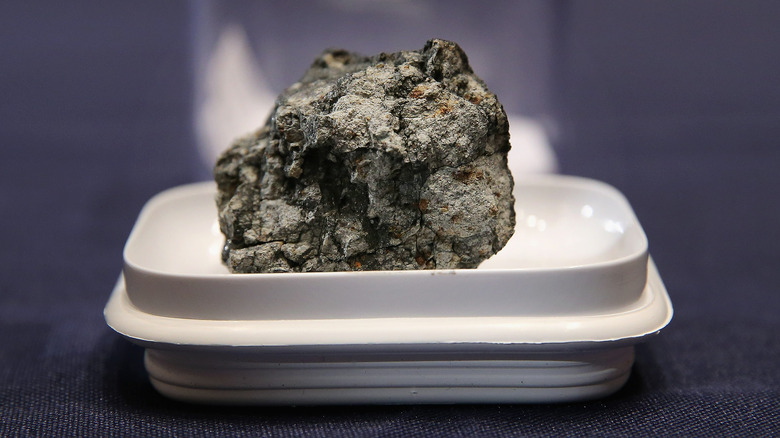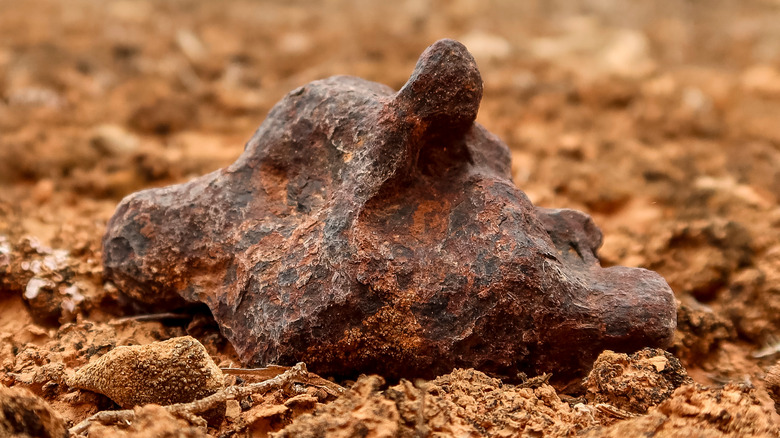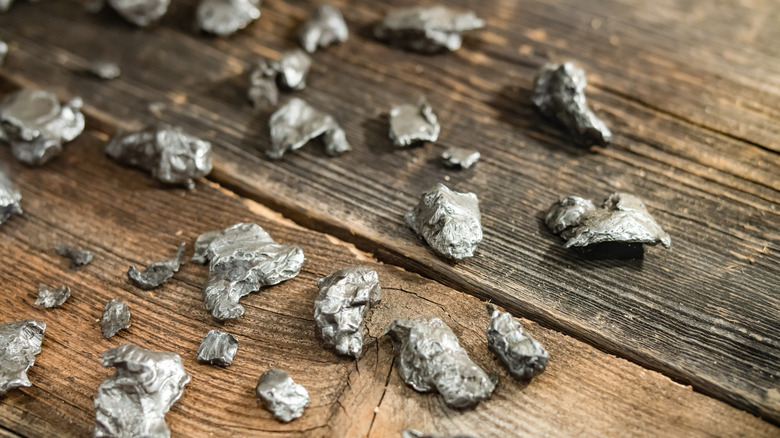The Stunning Discovery Made Inside A Meteorite In Somalia
If you've ever seen a shooting star, you've witnessed a meteor speeding across the sky. If that object makes its way to the ground, it's called a meteorite, and according to Space.com, only three types of meteorites have been identified: metallic, stony, and stony-metallic. Most meteorites are irregular in shape, and they are magnetic because they contain some amount of iron, per the United States Geological Survey (USGS).
National Geographic reports other compounds found in meteorites can include carbon, clay, silicates, oxygen, and amino acids. Some even contain materials that appear to be linked to the presence of water, like one meteorite that fell to our planet in 2021. It contained water that scientists think can help us understand how the Earth was formed, per Live Science. In 2020, a 4.6 billion-year-old meteorite, older than the Earth itself, was found in the Sahara Desert. And while those are fascinating enough, another meteorite discovered in Somalia contains two compounds not naturally found on the Earth, according to the University of Alberta.
The meteorite sat in one place for years
No one knows exactly when the meteorite fell to the Earth, but it was known to locals as "Nightfall" and celebrated in folklore and songs for over a century. It wasn't until 2019 that opal prospectors noticed the strange rock and sent samples to Chris Herd, professor in the Department of Earth and Atmospheric Sciences and curator of the University of Alberta's Meteorite Collection. Herd and his colleagues at the university identified the new minerals and announced their findings in 2022. Named "El Ali" after the town near which it was found, the meteorite is huge, weighing in at just over 15 tons, reports Science Alert.
El Ali is classified as an iron IAB meteorite, and Herd and other experts examining the 70-gram sample soon discovered that it contained unearthly compounds, later dubbed elaliite and elkinstantonite. Elaliite is named after the meteorite, and elkinstantonite gets its name from Lindy Elkins-Tanton, vice president of the Arizona State University Interplanetary Initiative. Scientists were able to identify the compounds as quickly as they did because human-made synthetic versions of them had already been created. Evidence leads experts to suspect that the meteorite might even contain a third, as-yet-unidentified substance.
El Ali was moved from Somalia
El Ali isn't the only IAB meteorite, but it is the only one to contain elkinstantonite and elaliite, which is exciting because that represents an intriguing aspect of its history. "Whenever you find a new mineral, it means that the actual geological conditions, the chemistry of the rock, was different than what's been found before," Chris Herd explains. He says that while it's his job to gain a better understanding of how meteorites form, he never thought he'd be involved in the discovery of new minerals just by studying one.
Additional discoveries regarding El Ali might be put on hold because the original "Nightfall" rock from which Herd's sample came was reportedly seized by the Somalian government. No one knows exactly what happened to the meteorite after that, but speculation is that it was moved to China, where brokers might have chopped it up into smaller pieces and sold them, according to Science Alert.


